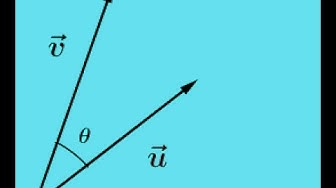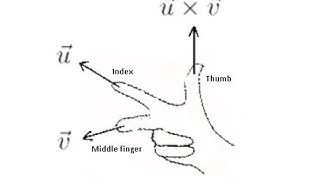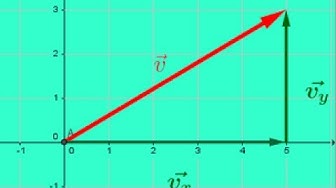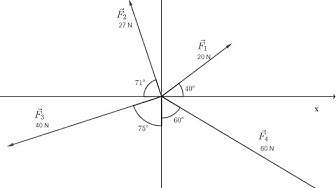
Use Dot Product to Find the Angle between Two 3D vectors
23K views · Oct 29, 2022 problemsphysics.com
The objective of this video is to explain the use of the dot product to find the angle between two 3D vectors U and V starting from the formula U.V = |U| . |V| . cos(theta) where U . V is the dot product calculated using the components of U and V. |U| and |V| are the lengths of the vectors U and V, and theta is the angle between them. more at: www.analyzemath.com/high_school_math/grade_12/scal_cross.html More math videos at https://www.analyzemath.com/math-videos.html. More math problems with solutions at https://www.analyzemath.com More grade 12 math practice at https://www.analyzemath.com/high_school_math/grade_12/grade-12-practice.html More grade 11 math practice at https://www.analyzemath.com/high_school_math/grade_11/grade-11-practice.html see www.analyzemath.com/calculus.html for more examples

Find the Cross Product of two Vectors
11K views · Oct 29, 2022 problemsphysics.com
The objective of this video is to discuss how to find the cross product of two vectors, given by their components, using the determinants. It is also shown that the cross product of two vectors U and V is perpendicular to both U and V. More in: http://www.analyzemath.com/high_school_math/grade_12/scal_cross.html http://analyzemath.com/stepbystep_mathworksheets/vectors/cross_product.html More math videos at https://www.analyzemath.com/math-videos.html. More math problems with solutions at https://www.analyzemath.com More grade 12 math practice at https://www.analyzemath.com/high_school_math/grade_12/grade-12-practice.html More grade 11 math practice at https://www.analyzemath.com/high_school_math/grade_11/grade-11-practice.html see www.analyzemath.com/calculus.html for more examples

Find the components of a vector given its magnitude and dire...
9K views · Oct 29, 2022 problemsphysics.com
The objective of this video is to explain how to find the components of a vector V given its magnitude and direction with respect to the x-axis. The following 6 examples are discussed in this video. Example 1: V has a magnitude of 20 and is directed along the positive x-axis Example 2: V has a magnitude of 10 and is directed along the positive y-axis Example 3: V has a magnitude of 40 and is directed along the negative x-axis Example 4: V has a magnitude of 5 and makes an angle theta with the positive x-axis Example 5: V has a magnitude of 10 and makes an anglof e 140 degrees with the positive x-axis in an anticlockwise direction. Example 6: V has a magnitude of 20 and makes an angle 122 degrees with the positive x-axis but in a clockwise direction. More on vector components www.problemsphysics.com/vectors/bearings_angles_vectors.html More math videos at https://www.analyzemath.com/math-videos.html. More math problems with solutions at https://www.analyzemath.com More grade 12 math practice at https://www.analyzemath.com/high_school_math/grade_12/grade-12-practice.html More grade 11 math practice at https://www.analyzemath.com/high_school_math/grade_11/grade-11-practice.html see www.analyzemath.com/calculus.html for more examples

Components of Forces
16K views · Nov 1, 2022 problemsphysics.com
This video reviews the formulas to find the components of a vector in terms of its magnitude and angle (direction) as measured from the positive x-axis. These formulas are then applied to four different examples of forces of different magnitudes and directions. More on forces at https://www.problemsphysics.com/forces.html More on physics problems at https://www.problemsphysics.com/index.html Subscribe to my channel to get more videos on math and physics for all levels https://www.youtube.com/channel/UC2cmvDflm86w7C_D7QmcOVA? sub_confirmation=1